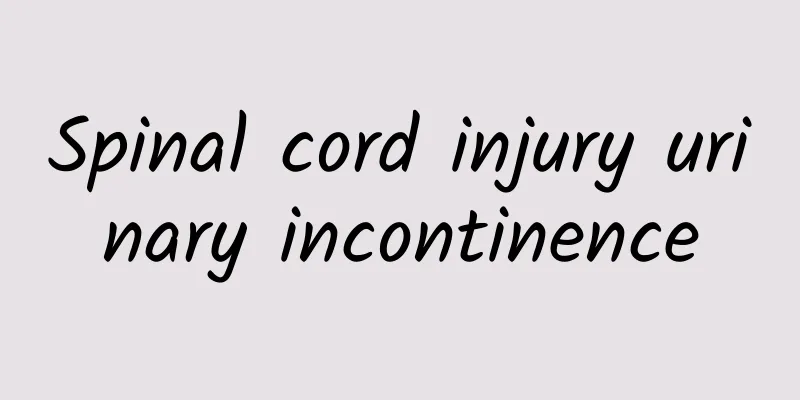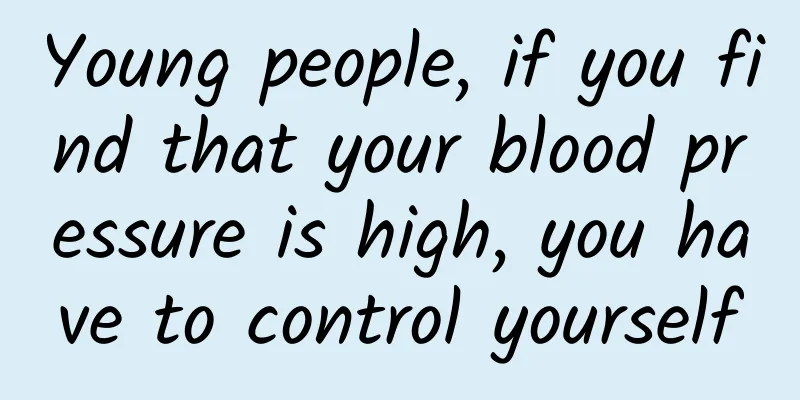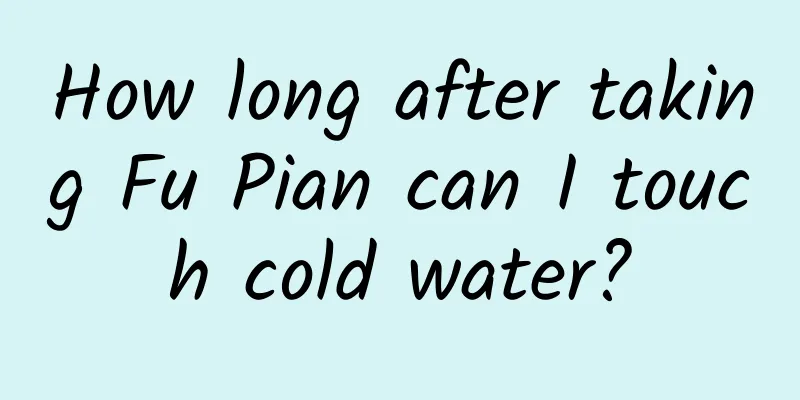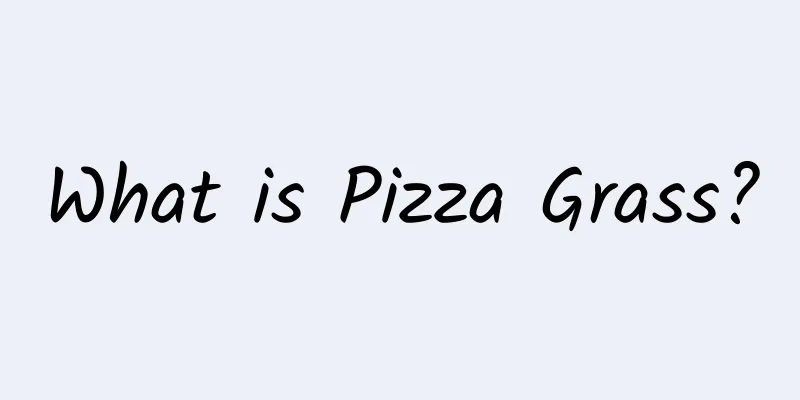Spinal cord injury urinary incontinence

|
The role of the spine in the human body is very important, and when the spine is injured, it must be treated in time, otherwise the consequences of spinal injury will be unimaginable. The spinal cord is located at the innermost part of the spine and is also a very important material component in the human body. And after the human spine is injured, the spinal cord is also prone to damage. What are the treatments for urinary incontinence caused by the spinal cord? What are the symptoms of spinal cord injury? 1. Spinal fracture 1. Have a history of severe trauma, such as falling from a height, heavy objects hitting the head, neck, shoulders or back, landslides, traffic accidents, etc. 2. The patient feels pain in the injured area, has difficulty in neck movement, has muscle spasms in the waist and back, and is unable to turn over or stand up. Localized kyphosis deformity can be felt at the fracture site. 3. Due to the stimulation of autonomic nerves by retroperitoneal hematoma, intestinal motility slows down, and symptoms such as abdominal distension and abdominal pain often occur, which sometimes need to be differentiated from abdominal organ damage. 2. Combined spinal cord and nerve root injury After spinal cord injury, movement, sensation, reflexes, sphincter and autonomic nervous function below the injury level are impaired. 1. Sensory impairment: The pain, temperature, touch and proprioception below the injury level are weakened or disappear. 2. Movement disorder During the spinal shock period, the area below the injured spinal cord presents as flaccid paralysis and loss of reflexes. After the shock period, if it is a spinal cord transection injury, upper motor neuron paralysis, increased muscle tone, hyperreflexia of the tendons, patellar clonus, ankle clonus and pathological reflexes will occur. 3. Sphincter dysfunction during the spinal shock phase manifests itself as urinary retention, which is caused by paralysis of the detrusor muscle of the bladder, resulting in a tension-free bladder. After the shock period, if the spinal cord injury is above the sacral cord level, an automatic reflex bladder may be formed, with residual urine less than 100 ml, but the patient cannot urinate at will. If the spinal cord injury plane is in the cone of the garden, the sacral cord or sacral nerve root is damaged, urinary incontinence will occur, and the bladder needs to be emptied by increasing abdominal pressure (squeezing the abdomen with hands) or using a catheter to empty the urine. Constipation and incontinence also occur in the stool. 4. Incomplete spinal cord injury: When the movement or sensation of the spinal cord distal to the injury plane is still partially preserved, it is called an incomplete spinal cord injury. Clinically, there are the following types: (1) Anterior spinal cord injury: manifested by loss of voluntary movement and pain sensation below the injury level. Because the posterior column of the spinal cord is intact, the patient's sense of touch, position, vibration, movement, and deep pressure is intact. (2) Central spinal cord injury: more common in cervical spinal cord injury. There is loss of motor function in the upper limbs, but the motor function in the lower limbs is preserved or the loss of motor function in the upper limbs is significantly more severe than that in the lower limbs. The tendon reflexes at the level of injury are absent, while the tendon reflexes below the level of injury are hyperactive. (3) Brown-Sequard's Symdrome: The contralateral pain and temperature sensation below the injury level disappears, and the motor function, position sense, movement sense and two-point discrimination on the same side are lost. (4) Posterior spinal cord injury: deep sensation, deep pressure sensation, and position sense below the injury level are lost, while pain, temperature sensation, and motor function are completely normal. It is more common in patients with vertebral lamina fractures. What are the complications of spinal cord injury? 1. Bedsores, which are caused by long-term local pressure, leading to blood circulation disorders in the area; 2. Urinary tract infection: The infection rate of patients with spinal cord injury is quite high due to the long-term stimulation of the indwelling urinary catheter in the body, which leads to the weakening of the bladder defense mechanism; 3. Joint stiffness and deformity; 4. Prevention and treatment of respiratory tract infections; 5. Dysfunction of the autonomic nervous system; 6. Constipation; 7. Stress ulcers often occur in patients with severe trauma. Due to the great stimulation, they may cause changes in autonomic nervous function and digestive dysfunction, leading to gastric and duodenal stress ulcers and upper gastrointestinal bleeding. 8. Lower limb venous thrombosis. The patient's blood is in a hypercoagulable state after trauma, venous return is slow, and long-term bed rest can easily cause lower limb venous thrombosis. The above knowledge is some of the symptoms after the occurrence of spinal cord injury. Severe spinal cord injury may cause paralysis of the patient. It is not a minor illness. We must learn more about this disease and prevent the occurrence of spinal cord injury in advance in daily life. If the above symptoms appear, timely treatment should be given. |
<<: The benefits and effects of chia seeds
>>: How to promote small intestinal absorption
Recommend
The efficacy and function of horse ear grass
Chinese medicinal materials are very effective in...
Effects and eating methods of palm ginseng
Palm ginseng, also known as Buddha's hand gin...
Can I sweat when I have a fever?
Steaming can prevent diseases and has a good swea...
Is lard residue healthy? Finally there is a reliable answer
Expert of this article: Zhang Zhaomin, Master of ...
The efficacy and function of the nine-scented insect [picture]
Nine-scented insect [picture] is a kind of tradit...
People who grew up in the countryside must have taken this liver-protecting "magic medicine"
If you are a child in the countryside, you must h...
How long does it usually take to take Chinese medicine?
Health issues have become a concern for more and ...
The efficacy and function of Qingfengteng
For many friends, Qingfengteng is a relatively un...
Can mugwort be used to bathe babies?
Artemisia is a medicinal herb that can clear away...
Another fitness move is going viral! A man's hemorrhoids ruptured after trying it! Doctor: Not suitable for everyone...
In the movie, Ip Man is a master of martial arts,...
Mars Exploration: Why Should Humans Conquer the Red Planet?
In the solar system, Mars, Mercury and Venus are ...
The pesticide residues in vegetables purchased from large e-commerce platforms also exceed the standard? What should I do?|Environmental Trumpet
Hello everyone, this is the first issue of the En...
Can eating maca really improve sexual performance?
Maca is a type of traditional Chinese medicine an...
The efficacy and function of red nepeta
Many people are not very clear about the effects ...









